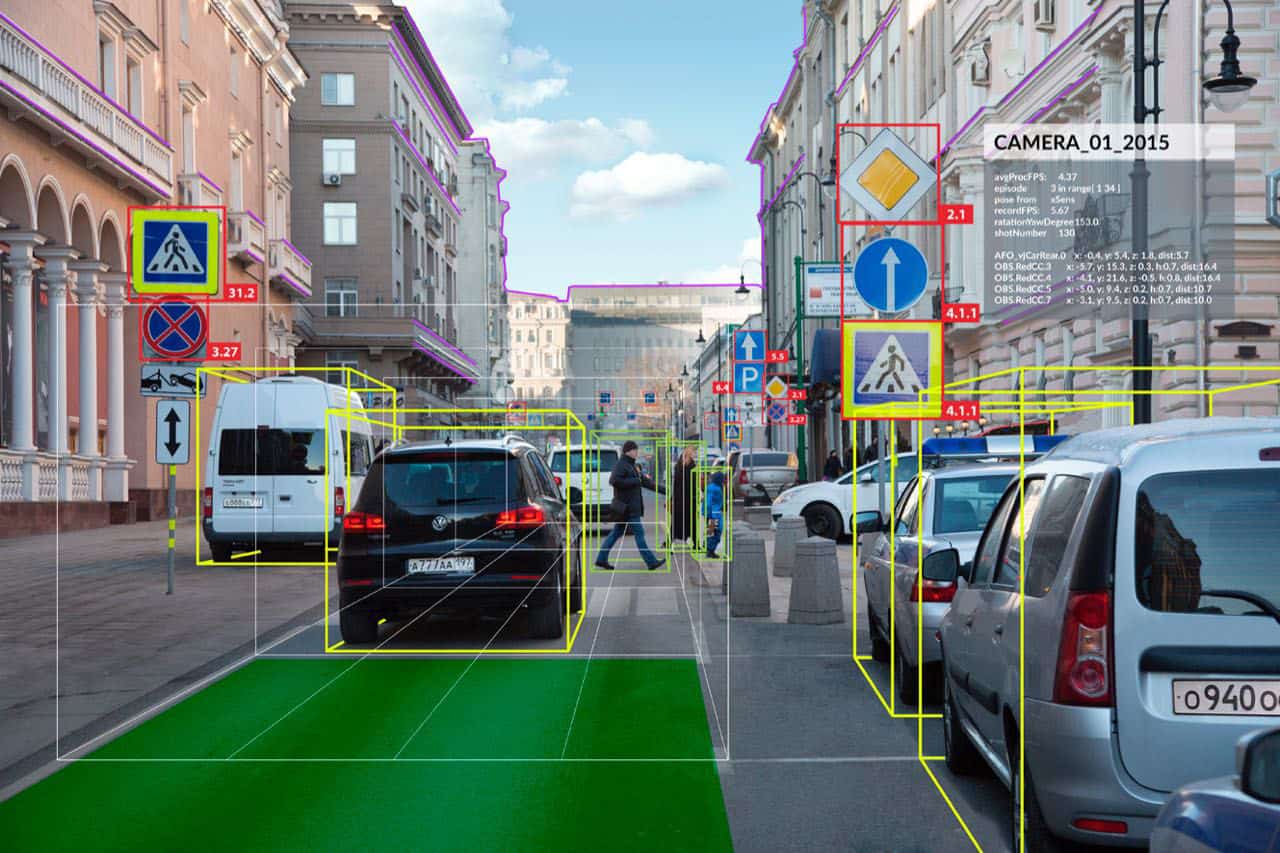Eyes and Minds
Eyes and Minds
Entering a new era for Vision
Eyes and Minds
Entering a new era for Vision
In the Cognitive, IOT 4.0 and AIoT Era understanding a scene is much more important than seeing it. Many big markets, such as Automotive, Industrial and Security, are experiencing a paradigm shift driven by the availability of systems equipped with machine vision and artificial intelligence.
Currently most Artificial Vision Systems, based on cameras that acquire pictures of the scene and CPUs/VPUs/FPGAs that extract the key information from them, can deliver good recognition capabilities but in most cases Human Vision still outperforms even the best combination of cameras and VPUs.
In the Cognitive, IOT 4.0 and AIoT Era understanding a scene is much more important than seeing it. Many big markets, such as Automotive, Industrial and Security, are experiencing a paradigm shift driven by the availability of systems equipped with machine vision and artificial intelligence.
In the Cognitive, IOT 4.0 and AIoT Era understanding a scene is much more important than seeing it. Many big markets, such as Automotive, Industrial and Security, are experiencing a paradigm shift driven by the availability of systems equipped with machine vision and artificial intelligence.
The artificial vision system of a car can miss a pedestrian standing at the exit of a tunnel, if it uses an LDR camera that is blinded by the external sunlight, or can misrecognize a road sign in the scene, if it uses an HDR camera that can generate artefacts around moving objects.
Software based solutions and complex pre/post-processing stages, designed to overcome/minimise such problems and running on expensive/energy-hungry VPUs, can mitigate the problem but not solve it.
Currently most Artificial Vision Systems, based on cameras that acquire pictures of the scene and CPUs/VPUs/FPGAs that extract the key information from them, can deliver good recognition capabilities but in most cases Human Vision still outperforms even the best combination of cameras and VPUs.
The artificial vision system of a car can miss a pedestrian standing at the exit of a tunnel, if it uses an LDR camera that is blinded by the external sunlight, or can misrecognize a road sign in the scene, if it uses an HDR camera that can generate artefacts around moving objects.
Software based solutions and complex pre/post-processing stages, designed to overcome/minimise such problems and running on expensive/energy-hungry VPUs, can mitigate the problem but not solve it.
Currently most Artificial Vision Systems, based on cameras that acquire pictures of the scene and CPUs/VPUs/FPGAs that extract the key information from them, can deliver good recognition capabilities but in most cases Human Vision still outperforms even the best combination of cameras and VPUs.
The artificial vision system of a car can miss a pedestrian standing at the exit of a tunnel, if it uses an LDR camera that is blinded by the external sunlight, or can misrecognize a road sign in the scene, if it uses an HDR camera that can generate artefacts around moving objects.
Software based solutions and complex pre/post-processing stages, designed to overcome/minimise such problems and running on expensive/energy-hungry VPUs, can mitigate the problem but not solve it.
AI4IV is striving to make available products and services that overcome this problem with the goal to deliver “artificial eyes”, i.e. intelligent, on-silicon devices based on a bio-inspired AI technology and an innovative vision architecture that can exploit the state-of-the-art, third-party sensing blocks to acquire any detail in the scene without any information loss.
The beauty of the AI4IV approach lies in the minimal space and energy requirements of the on-board AI blocks that enable Vision Sensors that can capture high-quality images and deliver comprehensive information content in any environmental conditions. Remarkably, the capability to deliver images and, at the same time, the associated content of information comes at the same cost, size and with the same power footprint of a current state-of-the-art camera chip capable to acquire only images.
With AI4IV, the future of artificial vision is now!
AI4IV is striving to make available products and services that overcome this problem with the goal to deliver “artificial eyes”, i.e. intelligent, on-silicon devices based on a bio-inspired AI technology and an innovative vision architecture that can exploit the state-of-the-art, third-party sensing blocks to acquire any detail in the scene without any information loss.
The beauty of the AI4IV approach lies in the minimal space and energy requirements of the on-board AI blocks that enable Vision Sensors that can capture high-quality images and deliver comprehensive information content in any environmental conditions. Remarkably, the capability to deliver images and, at the same time, the associated content of information comes at the same cost, size and with the same power footprint of a current state-of-the-art camera chip capable to acquire only images.
With AI4IV, the future of artificial vision is now!
AI4IV is striving to make available products and services that overcome this problem with the goal to deliver “artificial eyes”, i.e. intelligent, on-silicon devices based on a bio-inspired AI technology and an innovative vision architecture that can exploit the state-of-the-art, third-party sensing blocks to acquire any detail in the scene without any information loss.
The beauty of the AI4IV approach lies in the minimal space and energy requirements of the on-board AI blocks that enable Vision Sensors that can capture high-quality images and deliver comprehensive information content in any environmental conditions. Remarkably, the capability to deliver images and, at the same time, the associated content of information comes at the same cost, size and with the same power footprint of a current state-of-the-art camera chip capable to acquire only images.
With AI4IV, the future of artificial vision is now!


